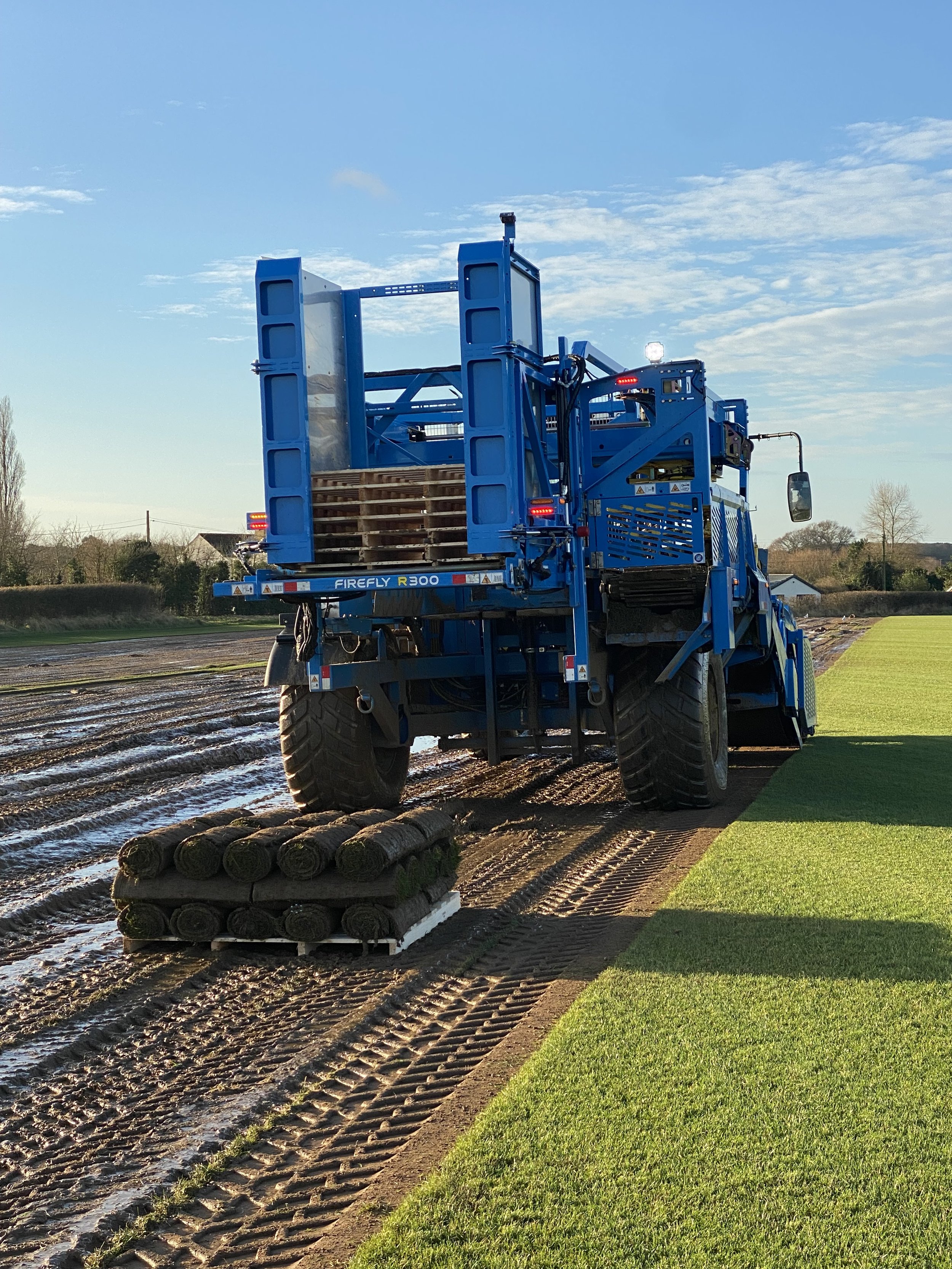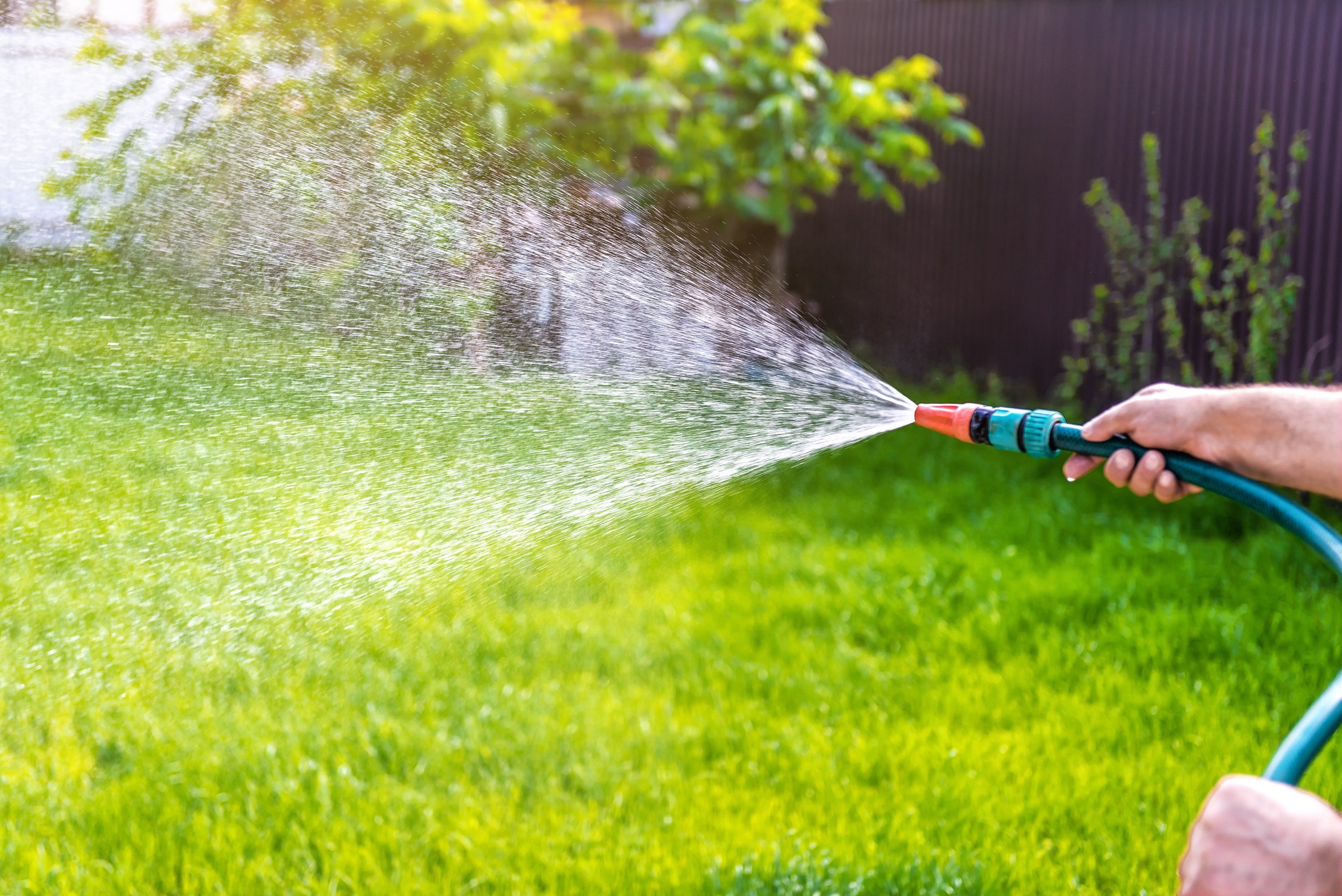
Our expert guide to laying and maintaining the ultimate lawn
We want your garden to look its best for years to come.
Here's how you can make sure it does.
We have meticulously cared for and nurtured your turf for an entire year. We deliver your turf to you in the best possible condition, and now it's over to you to give your new lawn the VIP treatment it deserves.
By following this guide, you'll maintain the premium condition of your turf, ensuring it thrives. With careful preparation and a solid maintenance program, your lawn will continue to flourish.
This guide is based on over three decades of grass-growing expertise. We continually experiment, test, and refine our processes to provide our clients with the highest quality turf.
01. Preparing the Ground
Before you start, ensure you have at least 100mm of topsoil to promote healthy grass growth.
Where there is no subsoil, at least 300m² of topsoil is required.
Spread pre-turfing fertiliser over the area to be turfed, then lightly cultivate, harrow and rake it until the soil is ready for final grading. Specific seasonal fertiliser can be bought and delivered with your turf order, ask our team for more details.
Remove all unneeded material from the ground, including debris and weeds, and any surface stones bigger than 35mm.
Rake to a true, even, consolidated surface. To avoid compacting the soil, only do this when it is dry.
02.
LAYING YOUR TURF
Turf should be laid within 12 hours of delivery May – September, or 24 hours from delivery October – April. In times of extreme heat turf must be laid immediately upon delivery.
Begin by laying the turf along a straight side, butting the ends closely together.
On subsequent rows, stagger the joints like brickwork, making sure that there are no gaps. If any do occur, fill them with topsoil.
If you need to adjust the position of the turf after unrolling, always push it rather than pulling it to avoid stretching.
Work from planks laid on the newly laid turf to avoid leaving footprints.
Make sure there is complete contact between the underside of the turf and the topsoil. If necessary, tamp or roll the turf lightly as you go along.
03.
THE FIRST WATERING
Water immediately after laying.
The first watering should make the soil damp to a depth of 100mm. Keep the turf, and the soil under it, damp - you can check its condition by turning up a corner of the turf.
Be careful not to overwater the turf - this creates boggy conditions and promotes grass diseases.
In the following days, water only in the morning and early evening. Reduce how much you water your turf over the next 28 days, but don’t allow the turf to dry out and go brown.
04.
final touches
New roots usually begin to appear on the underside of your turf within a few days after laying. To check just pick up a corner of the turf - if the roots have anchored then you can try walking on the lawn.
Your turf will normally be fully anchored after 2-3 weeks. However, if you have had to water it heavily you may find the soil is rather soft. Before walking across your lawn carefully test that the lawn is firm enough to take your weight.
We advise you don’t cut your new lawn until the turf has properly rooted. For the first few times, set your lawnmower to its highest setting, removing no more than one third of the length of the grass blade. When your lawn is fully established, the height can be reduced gradually to an optimum height of between 15-35mm.
SOVEREIGN TURF TOP TIP
You've invested in the best possible turf, so we recommend using Pre Turf Fertiliser (50 grams per m²) to ensure you get a well established healthy lawn. It’s optimised for new seedlings during the critical 6-8 weeks post-sowing. This formulation gives a low but fast-acting nitrogen dose, then drip feeds 30% of the nitrogen over a 90 day period.
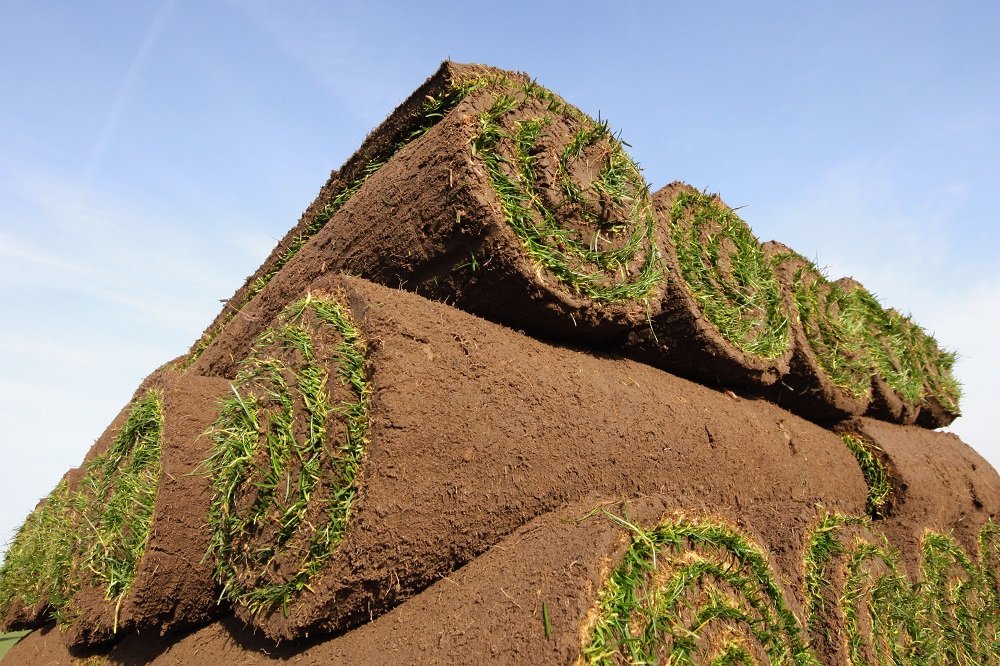
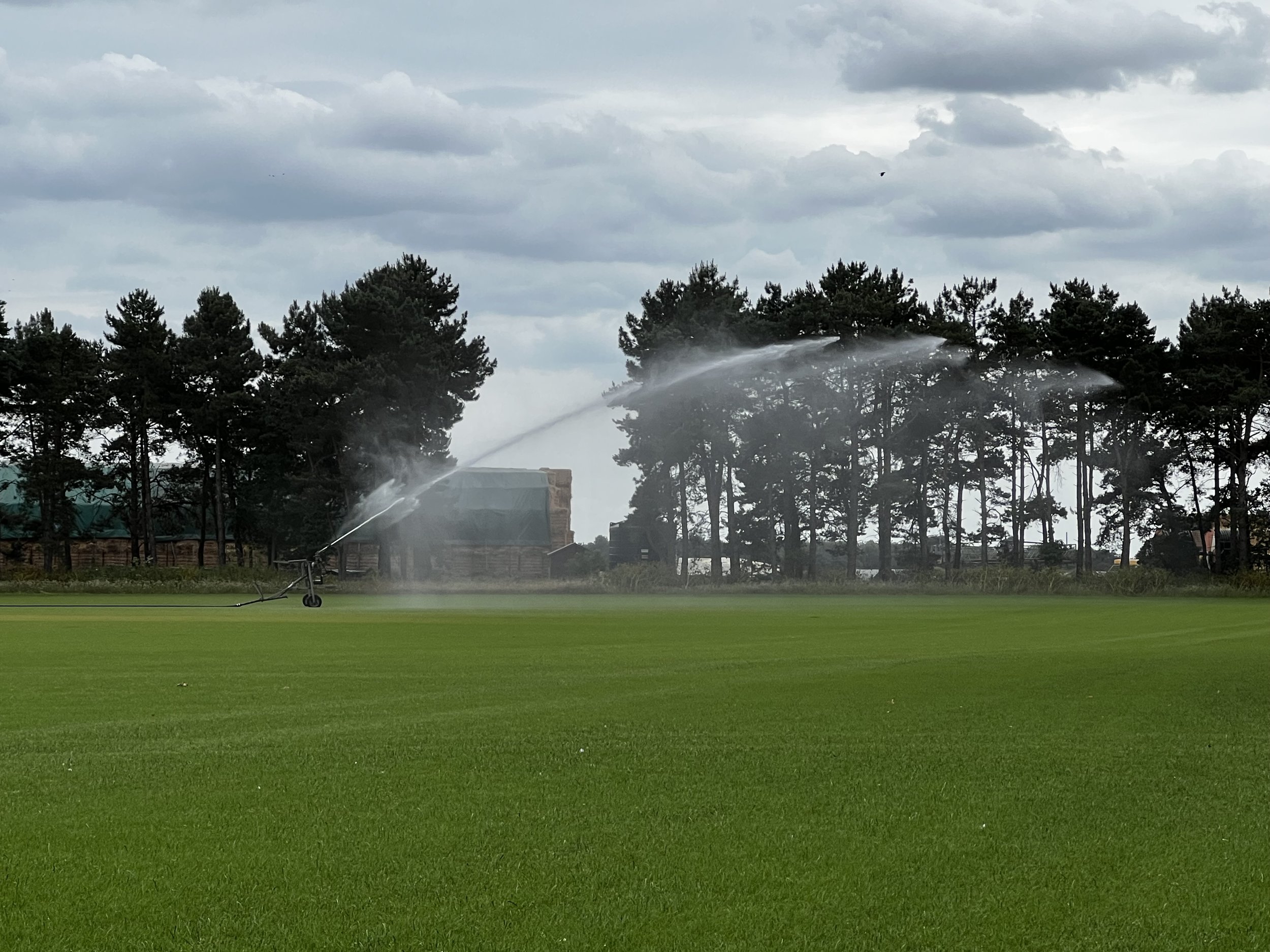
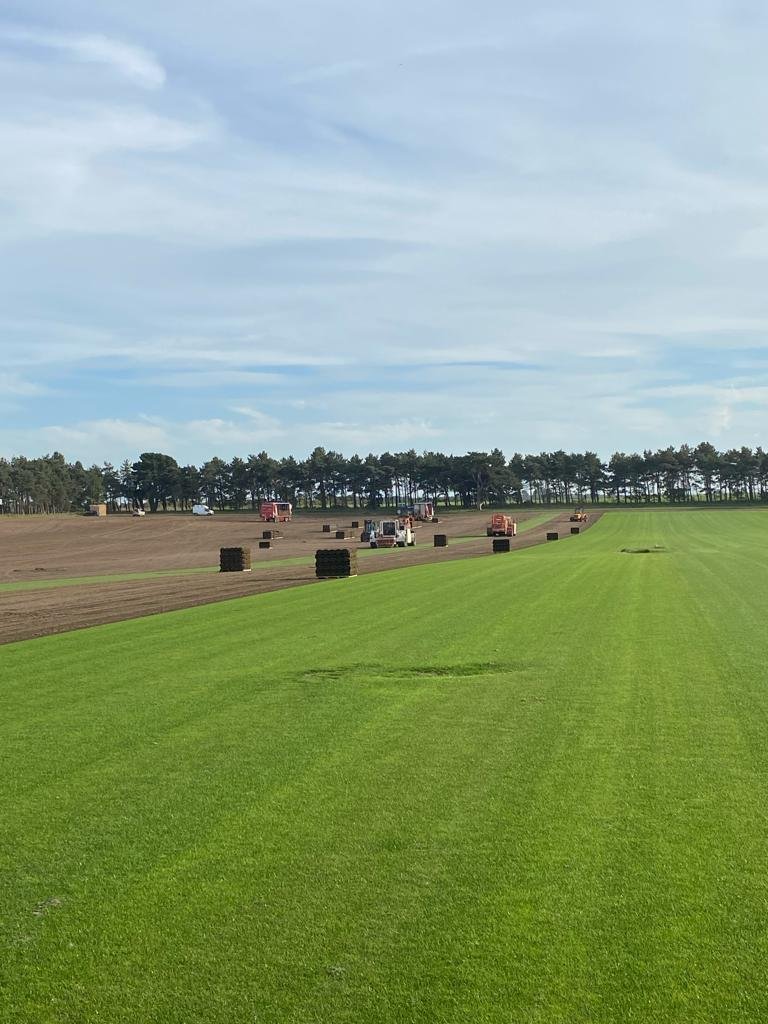


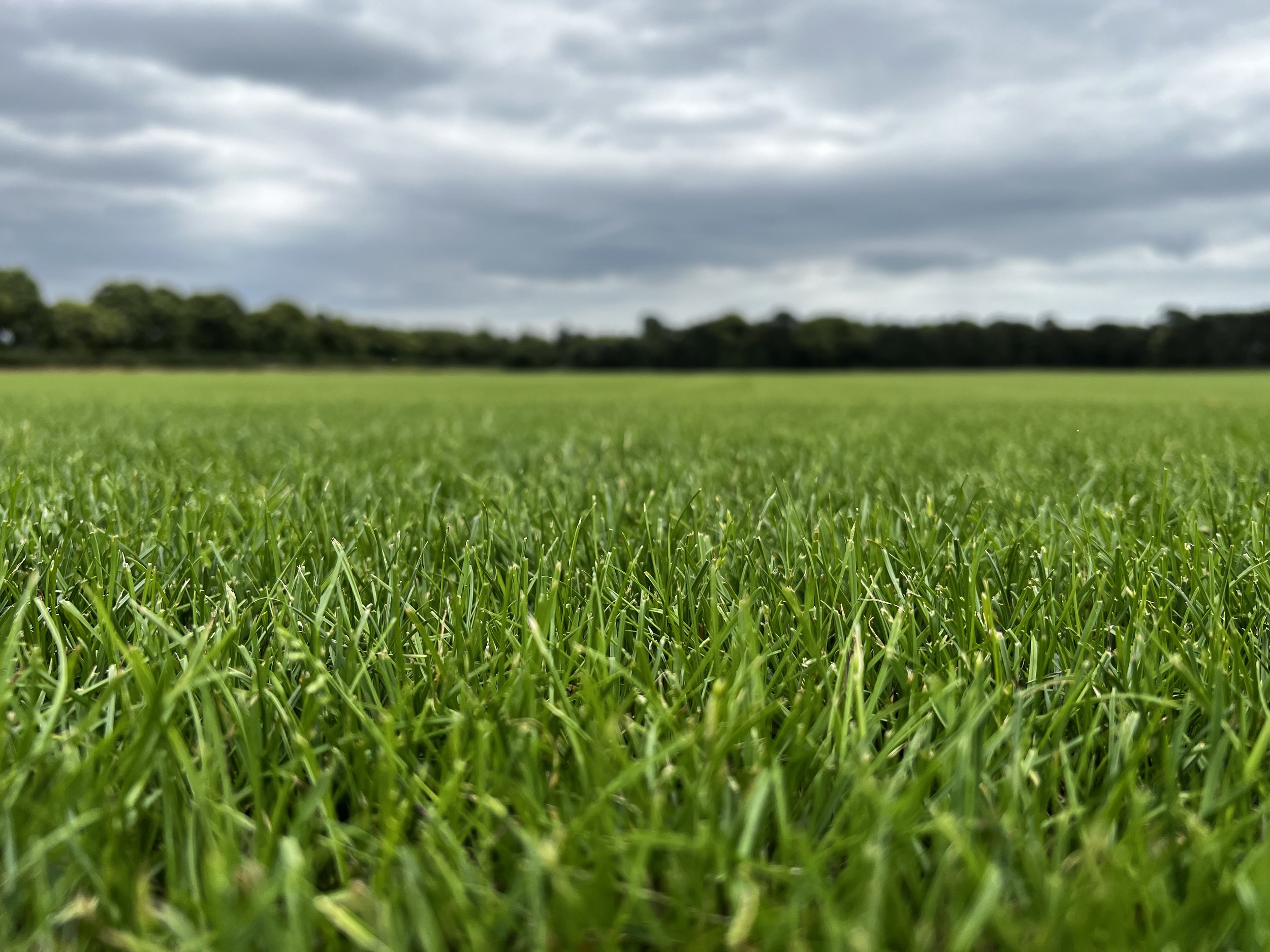
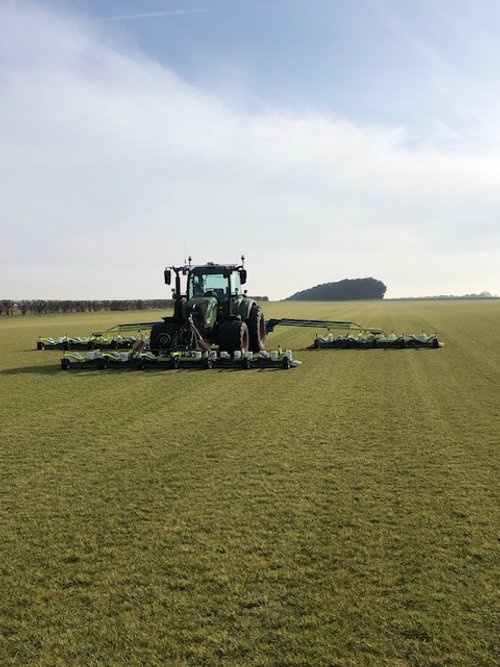
Maintaining an Established Lawn
Top tips for keeping your forever lawn in its finest condition.
-
Frequency: Mow your lawn regularly, typically once a week during the growing season. Adjust the frequency based on the grass growth rate.
Height: Keep your mower blades sharp and set the cutting height to about 2.5 to 3 inches. This helps to ensure the grass remains healthy and can outcompete weeds.
Pattern: Change the mowing pattern each time to avoid compacting the soil and encourage even growth.
-
Schedule: Water deeply but infrequently. Ideally, water early in the morning to minimise evaporation and allow the grass to dry before evening, reducing the risk of disease.
Amount: Lawns generally need about 1 to 1.5 inches of water per week, including rainfall. Use a rain gauge or an empty tuna can to measure this.
Technique: Ensure the water soaks into the soil to a depth of 6-8 inches. This encourages deep root growth, making the grass more drought-tolerant.
-
Fertilisation: Apply a balanced fertiliser according to the needs of your grass type and soil. Typically, this involves 3-4 applications per year: early spring, late spring, late summer and autumn.
Weed Control: Use pre-emergent herbicides in early spring to prevent weed seeds from germinating. For existing weeds, spot treat with appropriate post-emergent herbicides.
Soil Health: Conduct a soil test every 2-3 years to check for nutrient deficiencies and pH levels. Adjust soil health with lime or sulphur as needed based on test results.



